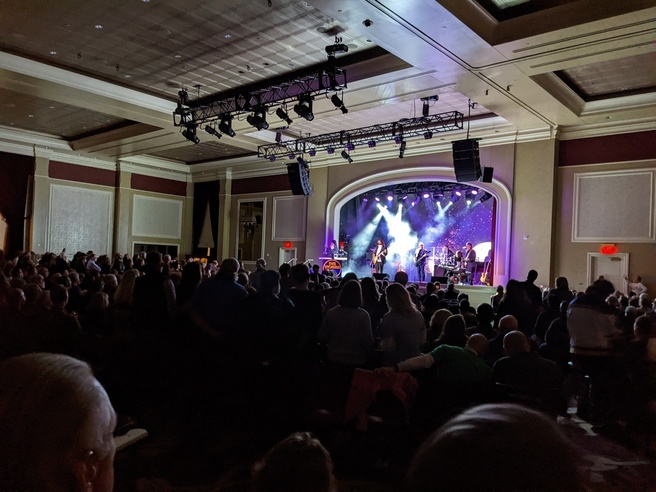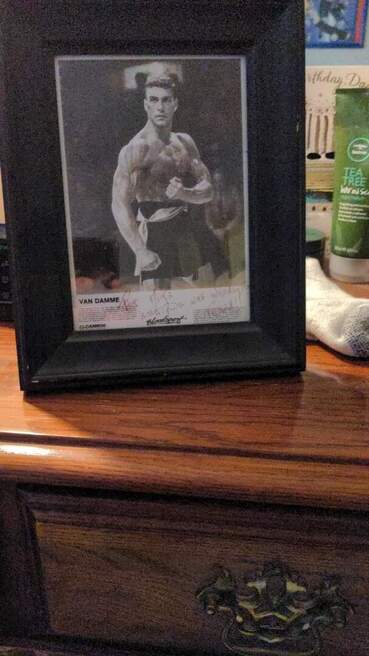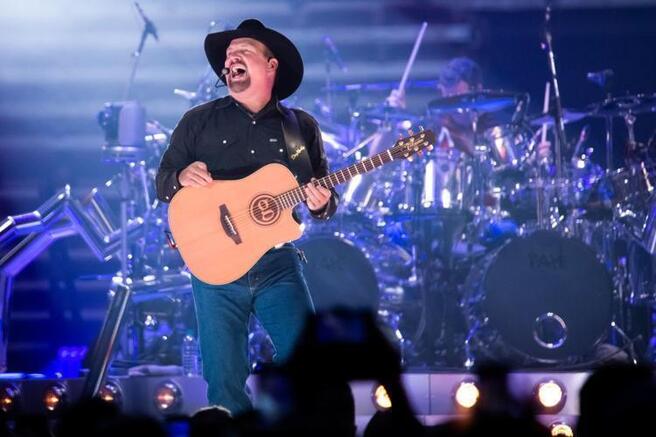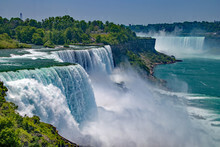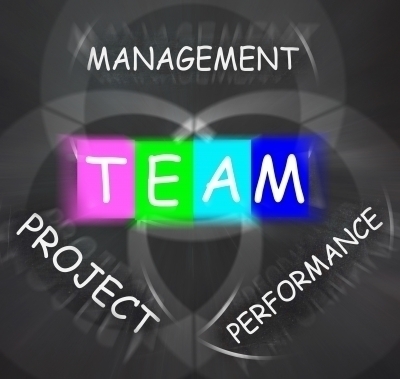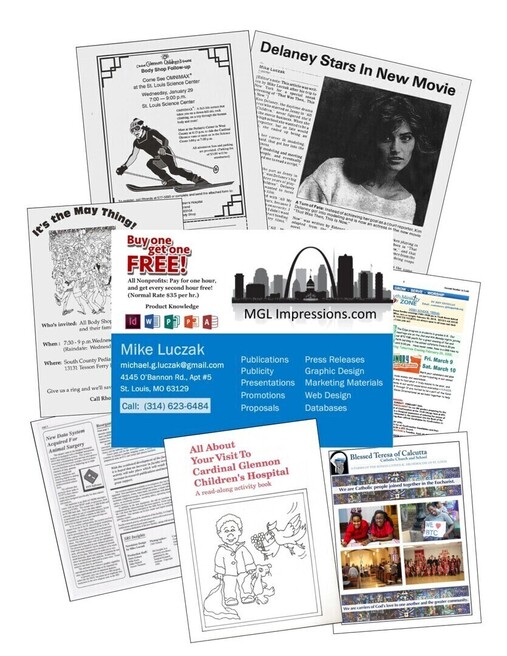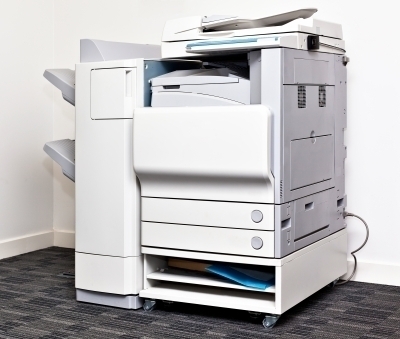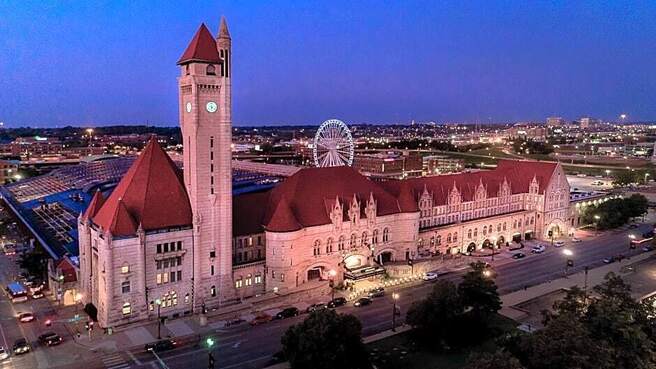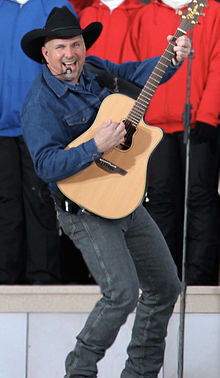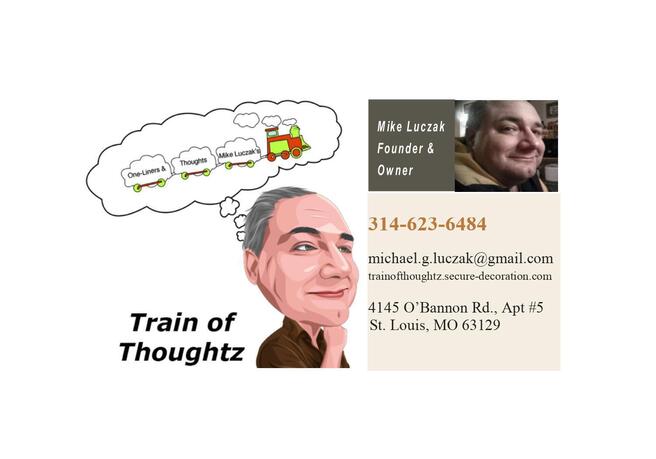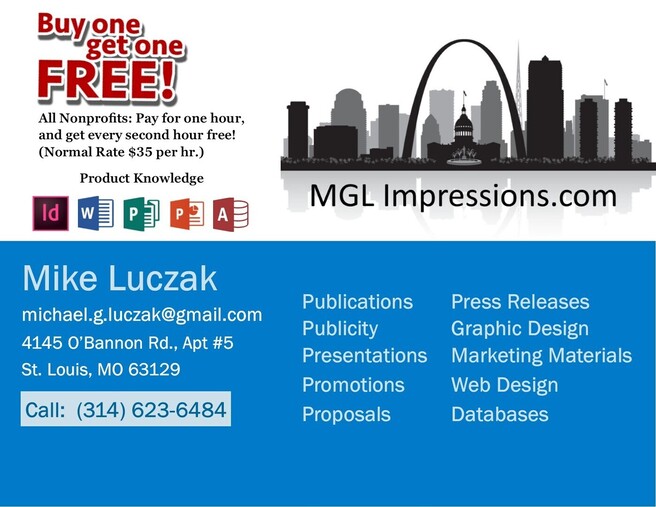Warner at post-game press conference for Super Bowl XXXIV
In the NFL playoffs, Warner ultimately led the Rams to a victory in
Super Bowl XXXIV against the
Tennessee Titans. In the game, he threw for two touchdowns and a then Super Bowl-record 414 passing yards, including a 73-yard touchdown to Isaac Bruce when the game was tied with just over two minutes to play, which proved to be the game-winning score. Warner also set a Super Bowl record by attempting 45 passes without a single interception. For his performance, Warner was awarded the
Super Bowl MVP award. As of 2021, Warner is the most recent player to win both the NFL MVP and Super Bowl MVP in the same year.
2000 season
On July 21, Warner signed a seven-year contract worth $47 million. He started the 2000 season where he had left off in his record-setting 1999 season, racking up 300 or more passing yards in each of his first six games (tying
Steve Young's record) and posting 19 touchdown passes in that stretch. Warner broke his hand and missed the middle of the season, but
Trent Green filled in ably and the Warner/Green duo led the Rams to the highest team passing yard total in NFL history, with 5,232 net yards. Warner and Green's combined gross passing yards total was 5,492. In contrast to his previous season, however, Warner's turnover rate drastically increased in 2000, as he threw an interception in 5.2% of his attempts (compared to just 2.6% in 1999). Despite one of the most productive offensive years by an NFL team, the Rams only won ten games and lost in the wild card round to the New Orleans Saints. In response to the disappointing season, the Rams cut nine of their eleven defensive starters during the offseason, and Trent Green was traded to the
Kansas City Chiefs.
2001 season
Warner quickly returned to MVP form in 2001. Although his performance lagged behind his 1999 performance, he amassed a league-high 36 touchdown passes and 4,830 passing yards, and another league-high mark in
passer rating (101.4). Warner's tendency for turnovers carried over from 2000, as he tossed a career-high 22 interceptions (despite completing a career-high 68.7% of his passes), but he still led "The Greatest Show on Turf" to its third consecutive 6–0 start (becoming the first NFL team to do so, later equaled by the 2005–2007
Indianapolis Colts), an NFL-best 14–2 record, and an appearance in
Super Bowl XXXVI. Warner was also named the NFL MVP for the second time in three seasons, giving the Rams their third winner in as many years (running back Marshall Faulk won in 2000).
In Super Bowl XXXVI, Warner threw for 365 yards (then the second-highest, now the sixth-highest total in Super Bowl history) and a passing touchdown along with a rushing touchdown, but his rhythm was disrupted by
New England Patriots coach
Bill Belichick's defensive game plan and he tossed two costly interceptions which helped stake the heavy-underdog Patriots to a two-touchdown lead. After falling behind to the Patriots 17–3, though, the Rams rallied to tie the game late in the fourth quarter on a one-yard Warner quarterback sneak touchdown run and a 26-yard touchdown pass from Warner to Ricky Proehl. The game ended in a 20-17 loss for Warner and the Rams when Patriots kicker
Adam Vinatieri kicked a game-winning field goal as time expired, giving the Patriots the first of three Super Bowl wins in four years.
2002–2003 seasons
Warner began the 2002 season as the Rams' starter, but he played poorly, throwing seven interceptions against only one touchdown as the team went 0–3. In the Rams' fourth game, this one against the
Dallas Cowboys, Warner broke a finger on his throwing hand. Warner attempted to come back later in the season, but his injury allowed him to play only two more games (both losses). In contrast to his 103.0 career passer rating entering the season, Warner posted a minuscule 67.4 rating in 2002.
The following season, Warner was replaced as the Rams' starting quarterback for good after fumbling six times in the team's opening-day game against the
New York Giants. Warner later revealed that he had previously broken his hand and that it had not fully healed, making it more difficult to grip the football. His successor as the Rams' starting quarterback,
Marc Bulger (another relatively unheralded quarterback coming out of college), stepped into the breach and played reasonably well upon replacing Warner.
The Rams signed veteran
Chris Chandler as Bulger's backup. The Rams released Warner on June 1, 2004. with three years left on his contract.
New York Giants[
edit]Two days after his release from the Rams, he signed a one-year, $3 million deal with the
New York Giants, with a second-year player option worth $6 million.
[24] Warner started the 2004 season as the Giants' starting quarterback, winning five of his first seven games, but following a two-game losing streak, highly touted rookie quarterback
Eli Manning was given the starting job. The Giants had a 5–4 win-loss record at the time of Warner's benching, finishing at 6–10 overall (going only 1–6 under Manning). Following the season, Warner chose to void the second year of his contract, and thus became a free agent.
Arizona Cardinals2005 season
In early 2005, Warner signed a one-year, $4-million contract with the
Arizona Cardinals, and was quickly named the starter by coach
Dennis Green. Warner posted three relatively mediocre performances before injuring his groin and being replaced by former starter
Josh McCown. McCown performed well enough in the two games Warner missed that McCown remained the starter.
After McCown struggled in two straight games, Green re-inserted Warner into the starting line-up. After playing fairly well in two consecutive losses (passing for a total of nearly 700 yards), Warner defeated his former team, the Rams, by a score of 38–28. He passed for 285 yards and three touchdowns while posting a quarterback rating of 115.9. Warner's season ended in week 15 when he partially tore his
MCL.
Warner signed a new three-year extension with the Cardinals on February 14, 2006. The deal had a base salary of $18 million and, with performance incentives, could have been worth as much as $24 million.
2006 season
In Week 1 of the 2006 NFL season, Warner won the NFC Offensive Player of the Week award, throwing for 301 yards and three touchdowns in a win over
San Francisco. Two weeks later, Warner passed the 20,000-yard passing milestone in his 76th game, the second-quickest of any player in NFL history (Warner accomplished the feat in one game more than it took record-holder Dan Marino).
After three subpar games in Weeks 2-4, Warner was replaced at quarterback by rookie
Matt Leinart in the fourth quarter of week 4. Then-coach Dennis Green stated that Warner would be the backup quarterback for the remainder of the season. In week 16, Leinart went down with a shoulder injury against the 49ers, forcing Warner to see his first action since week 4. Warner filled in nicely, as he was able to hang on for the Cardinals win. In week 17 against the
San Diego Chargers, Warner started again in place of the injured Leinart, throwing for 365 yards (which led the NFL for that week) and a touchdown, though the Chargers were able to hold on for a 27–20 win.
2007 season
Leinart was given the starting quarterback job at the start of the 2007 season. However, in the third game of the season, against the
Baltimore Ravens, Warner came off the bench to relieve an ineffective Leinart during the 4th quarter with the Ravens leading 23–6 at the beginning of the period. Warner led a furious comeback, as he completed 15 of 20 passes for 258 yards and 2 touchdowns. This brought Arizona to a tie game (23–23), though Arizona would go on to lose the game 26–23 after Baltimore kicked a last-second field goal.
On September 30, 2007, during the week four game against the
Pittsburgh Steelers, Warner relieved Leinart again, following another ineffective start. Warner finished with 14 completed of 21 attempts for 132 yards with one touchdown pass and no interceptions, while Leinart re-entered the game in the 4th quarter and led the Cardinals to their final touchdown. After Leinart was placed on injured reserve, Warner was named the starter for the remainder of the 2007 season.
Warner passed for a career-high 484 yards against the 49ers in a 37–31 loss on November 25th, but had a fumble in the end zone in overtime that was recovered by
Tully Banta-Cain, and the Cardinals lost. However, the following week Warner improved; and the Cardinals earned a victory over the Browns that brought the Cardinals to 6–6 and kept them in the chase for the NFC Wild Card playoff spot. Warner finished the 2007 season with 27 passing touchdowns, just one shy of the Cardinals franchise record. Warner's performance earned him a $1 million bonus for the year, and he fell just short of attaining a 90.0+ passer rating, which would have given him an extra $500,000.
2008 season
Leinart was named the Cardinals' starting quarterback going into the 2008 off-season, but
Ken Whisenhunt stated that it would be very possible for Warner to be the starter before week one of the
regular season. Indeed, Warner was named the starter on August 30, 2008. That season, Warner had 4,583 passing yards, 30 touchdowns, and a completion percentage of 67.1%. He was the top-ranked passer in the National Football Conference for the third time, and only trailed
Philip Rivers and
Chad Pennington of the AFC in NFL passer rating for the season. Warner also received
FedEx Air Player of the Week honors for his performance during weeks 9 and 11 of the season. He had his struggles during the season, as in week 3 of the season vs. the
New York Jets, his team turned the ball over 7 times. This included an interception for a touchdown, and 2 picks resulting in a touchdown and a field goal in just the second quarter. Warner still managed to get his team to score 35 points in a 56-35 loss.
On December 7, 2008, Warner led the Cardinals to a 34–10 win over his former team, the Rams, securing for the Cardinals the NFC West Division title and their first playoff berth since 1998. It was the Cardinals' first division title since 1975 and the third of the post-merger era. As a result, the Cardinals would earn a home playoff game, only their second ever, and their first in Arizona (despite winning division titles in the 1974 and 1975 seasons in St. Louis, the Cardinals played on the road in the playoffs as a result of the playoff structure in those days). On December 16, 2008, Warner was named the starting quarterback for the NFC team in the
2009 Pro Bowl.
2008 postseason[edit]
On January 3, 2009, Warner led the Cardinals in their victory over the
Atlanta Falcons 30–24 at
home in the first round of the playoffs. During the game, Warner went 19 for 32 passing, a completion percentage of 59.4%, for 271 yards. He threw two touchdowns and one interception. This win represented the first time the Cardinals had won a post-season home game since the
1947 NFL Championship Game.
On January 10, Warner helped the Cardinals defeat the Carolina Panthers 33–13 in Charlotte, North Carolina in the second round of the playoffs. During the game, Warner went 21 for 32 passing, for 220 yards, a completion percentage of 65.6%, with two touchdowns and one interception. This win was the first time the Cardinals had won a game on the East Coast the entire 2008 season, after having lost away games to the Panthers,
Washington Redskins,
Philadelphia Eagles,
New York Jets, and the
New England Patriots.
On January 18, Warner threw for 279 yards, four touchdowns, and no interceptions against the
Philadelphia Eagles to lead the Cardinals to their first Super Bowl appearance in history. Warner is one of four quarterbacks who made Super Bowl starts with two teams (alongside
Craig Morton,
Peyton Manning and
Tom Brady).
In Warner's third career Super Bowl appearance on February 1, the Cardinals lost
Super Bowl XLIII 27–23 to the Pittsburgh Steelers, leaving him with a career 1–2 record in Super Bowls. Despite losing, Warner still managed to throw for 377 yards (the fourth-highest total in Super Bowl history). He completed 72.1% of his passes and had a quarterback rating of 112.3. Warner had now recorded the three highest single-game passing yardage totals in the history of the Super Bowl and joined
Roger Staubach,
Terry Bradshaw,
Joe Montana,
John Elway, and
Tom Brady as the only quarterbacks to throw a touchdown pass in three Super Bowls. Warner had taken his team to the Super Bowl every year that he played as the starting quarterback during all regular and post season games
]2009 season
Warner announced his desire to return to the Cardinals for the 2009 season. The Cardinals offered him a two-year contract worth around $20 million but Warner was looking for a contract that would pay him about $14 million a year and the two sides could not come to an agreement. On February 27, 2009, Warner became a
free agent and went on to have talks with the
San Francisco 49ers. The
49ers offered Warner a contract worth more than that offered by the Cardinals. On March 4, Warner re-signed with the Cardinals to a two-year deal worth $23 million total, $4 million for each of the next two years, with a $15 million signing bonus, and $19 million guaranteed. Warner underwent
arthroscopic hip surgery to repair a torn
labrum on March 17, 2009. On September 20, 2009, Warner broke the NFL's single-game record for completion percentage in the regular season, completing 24 of 26 passing for 243 yards and two touchdowns. Warner's 92.3 percent completion rate broke the previous NFL record set by
Vinny Testaverde in 1993.
On November 1, 2009, Warner threw a career-high-equaling five interceptions during a loss to the Carolina Panthers. During the same game, Warner became the first quarterback in the NFL to throw for over 14,000 yards with two teams. On November 8, Warner equaled his career-high of five touchdown passes in a single game during a 41–21 victory over the Chicago Bears. This performance led to Warner being named both the NFC Offensive Player of the Week
[34] and the FedEx Air NFL Player of the Week. On November 15, 2009, Warner reached a career milestone with his 200th touchdown pass during a 31–20 win against the Seattle Seahawks.
On November 22, 2009, during a 21–13 victory over the
St. Louis Rams, Warner left the game after suffering a
concussion.
[37] Warner continued to suffer from post-concussion symptoms and on November 29, 2009, he was deactivated against the Tennessee Titans, breaking his consecutive starts streak at 41 straight games. On December 6, 2009, Warner returned to action as the Cardinals defeated the Minnesota Vikings 30–17. Warner registered his fourth consecutive game with a passer rating of 120 or better, making him only the second quarterback in NFL history to accomplish the feat. After his three-touchdown performance, Warner was named both the NFC Offensive Player of the Week and the FedEx Air NFL Player of the Week.
On December 27, 2009, Warner became only the second quarterback in NFL history to throw 100 touchdown passes with two teams (
Hall of Famer Fran Tarkenton is the other), in the Cardinals' 31–10 win over the St. Louis Rams. On December 29, 2009, Warner was named an alternate quarterback for the NFC team in the
2010 Pro Bowl.
2009 postseason
On January 10, 2010, Warner threw five touchdowns and completed 29 of 33 passes for 379 yards in a 51–45 victory over the
Green Bay Packers. The game had the highest combined total score in NFL playoff history. Warner became one of the very few quarterbacks in NFL history to throw more touchdowns (5) than incompletions (4) in a playoff game. Warner finished the game with the second-highest quarterback rating in NFL playoff history with a rating of 154.1. He also became the second quarterback to throw for five touchdown passes in a playoff game twice and the first to do so since the
merger of the leagues. He is also the oldest player to have thrown that many touchdown passes in a playoff game (38 years, 202 days). Warner also tied the NFL record for
consecutive playoff games with at least three touchdown passes (three games). Since the playoff game was his last at home in the playoffs during his career, he finished a perfect 7-0 in home contests (4-0 with St. Louis; 3-0 with Arizona).
Retirement
Warner officially announced his retirement from the NFL in January 2010. He said he was looking forward to finally being a true father to his seven kids, and that he wanted to spend time with his wife. He spoke on the impact and influence of his family, former teammates, and God. He became eligible for induction into the
Hall of Fame following the 2014 season.


